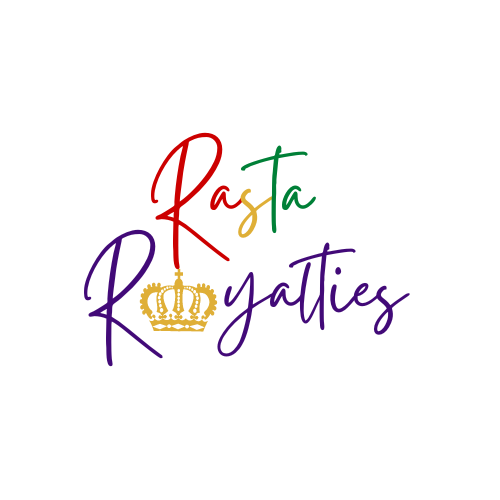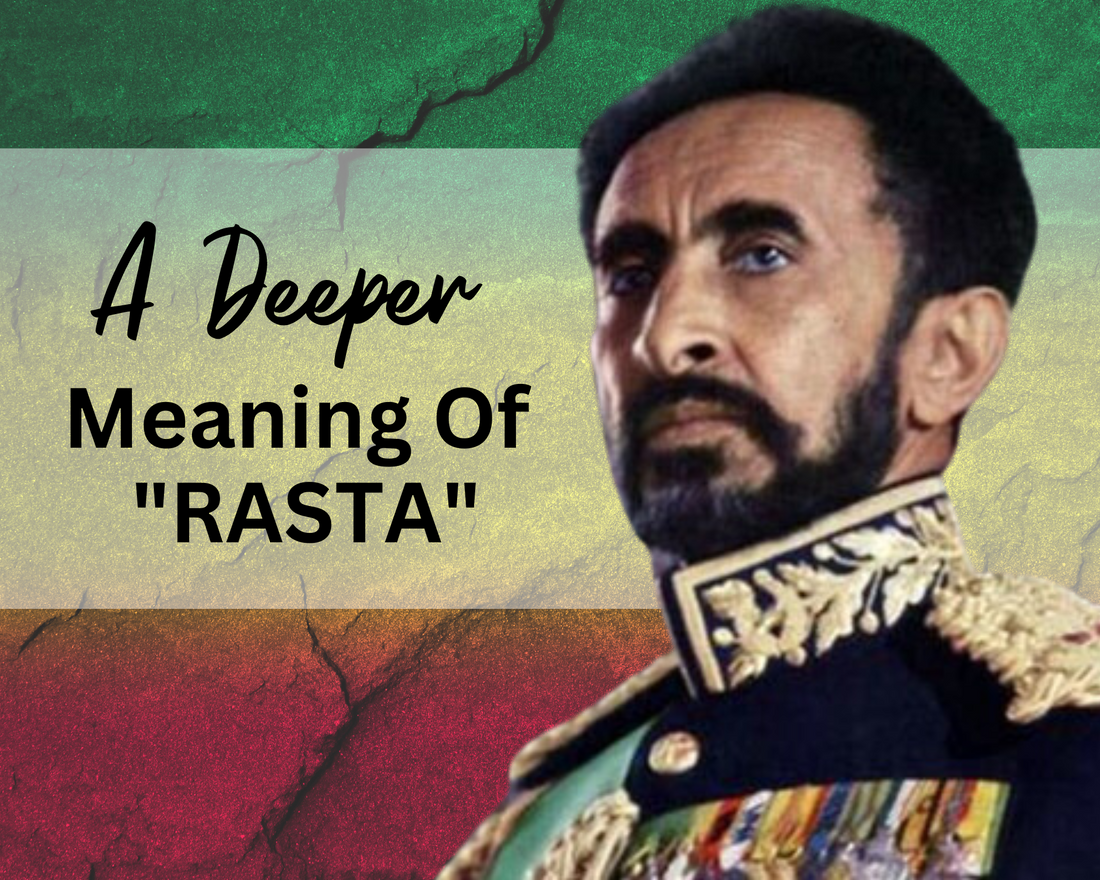Greetings, in the name of Qedamawi Haile Selassie I, King of Kings, Lord of Lords, The Conquering Lion of Judah.
In the heart of "Rasta" lies a profound reverence for Haile Selassie, a representation of utmost importance and divinity. Beyond being a historical and political leader, Haile Selassie I represents a spiritual connection that has ignited the flames of unity, equality, and love within the way of life. Rastafari is more than just a movement; it's a way of life that encapsulates profound beliefs, values, and vibrant culture. Beyond the surface, the Rastafari truth is filled with unity, love, and a connection to cultural roots. In this exploration, we'll dive into the true meaning of Rastafari, with a focus on the role of Haile Selassie as GOD himself with high significance.
The Divine Manifestation of Haile Selassie
Central to the Rastafari truth is the conviction that Haile Selassie is the earthly manifestation of God, fulfilling the prophecy of the returning Messiah. This truth, rooted in deep spiritual yearning, has granted upon Haile Selassie the title of "Jah" – a sacred embodiment of the divine presence within the movement. The term "Jah" is a sacred reference within Rastafarian culture, signifying the divine essence and presence of God. Haile Selassie is referred to as "Jah Rastafari," symbolizing the truth that he is the embodiment of the divine Jah on Earth. This spiritual title goes beyond mere reverence; it represents a profound connection to the divine source of life and creation. The mere mention of his name evokes a sense of reverence and devotion, uniting Rastafarians across the globe in shared faith.
Haile Selassie's significance to Rastafarian faith goes beyond the historical records; it's a spiritual connection that empowers and uplifts. As the embodiment of Jah, his presence brings unity, hope, and a reminder of the divine essence that resides within each individual. His legacy continues to inspire Rastafarians to embrace a life guided by the principles of unity, love, and spiritual enlightenment.
Haile Selassie is the fulfillment of biblical prophecies, particularly the prophecy of the return of the Messiah. His coronation in Ethiopia is the true realization of this prophecy, affirming his spiritual significance.

Haile Selassie's Influence on Rasta Culture
Rastafari emerges as a celebration of African heritage, a way of reconnecting with ancestral roots that were severed by the transatlantic slave trade. Through the embrace of African culture, language, and traditions, Rastafarians seek to rekindle a sense of identity and belonging. Rasta encourages a return to the essence of pre-colonial Africa, fostering a pride that emanates from within and radiates outward.
The impact of Haile Selassie on Rasta culture is immeasurable. From his speeches advocating for justice to his vision of a united Africa, his words and actions have inspired generations of Rastafarians to stand up for their beliefs and work towards a better world. His relentless commitment to social justice and his stance against oppression mirror the core values of the Rasta movement, cementing his significance in its history.
The connection with Haile Selassie extends beyond the physical realm. Through prayer, meditation, and spiritual practices, Rastas seek guidance from the divine presence. His teachings serve as a guiding light, providing wisdom and strength to navigate life's challenges and foster positive change in the Rasta communities. His words and actions reflect a deep commitment to moral principles, peace, and compassion. His speeches on the importance of unity and equality resonate with the Rastafarian truth in the interconnectedness of all humanity, encouraging followers to strive for a better world based on love and justice.
Love and Empowerment
At the heart of Rastafari beats a profound love – love for oneself, for others, and for the world at large. This love is not passive; it's an active force that drives individuals to stand against oppression and injustice. Rastafarians view love as a catalyst for change, giving the inspiration to work towards a world where all beings are treated with respect and dignity. Love is the driving force, and it's intricately woven into every aspect of life.
Unity through Red, Gold, and Green
The colors of Rastafari - red, gold, and green are not just hues on a palette, it's more than just a visual representation. They're a language of unity and identity. They are vibrant symbols that express the core values and principles of Rastafarian culture. Beyond their visual appeal, these colors carry profound meanings that speak of unity, heritage, and a shared vision for a better world.
Red: Blood, Struggle, and Sacrifice: The color red in Rastafarian culture represents the bloodshed, struggle, and sacrifices made by individuals who fought for justice and equality. It serves as a reminder of the hardships endured by Africans throughout history, particularly during the era of slavery and colonization. The red hue symbolizes the resilience of a people who faced adversity with relentless courage and strength, and it unites Rastafarians in their commitment to social justice and the eradication of oppression.
Gold: The Wealth of Africa's Legacy: Gold is more than just a precious metal; it represents the wealth and potential of Africa, the cradle of civilization. Rastafarians view Africa as their ancestral homeland, a place rich in history, culture, and resources. The color gold embodies the heritage and contributions of African civilizations, reminding Rastafarians of the deep roots from which they draw strength and inspiration.
Green: The Lushness of the Homeland: The color green symbolizes the lush landscapes and abundant vegetation of Africa, representing the natural beauty and fertility of the continent. It serves as a reminder of the homeland's richness and vitality. Green is a call to reconnect with the earth, honor the environment, and strive for harmony between humans and nature. It embodies the Rastafarian respect for the planet and the interconnectedness of all living beings.
The Unity in Colors: When red, gold, and green converge, they form a trinity of unity that echoes the values of Rastafarian culture. Together, these colors tell a story of resilience, heritage, and a shared aspiration for a world free from oppression. They serve as a point, a visual language that unites Rastafarians across the globe under a common banner of justice, love, and equality.
Within the Rastafarian faith, Haile Selassie remains a luminous thread, illuminating the path toward spiritual growth, social justice, and a deepened connection to the divine source of life. His role as a divine manifestation fuels the flames of Rastafarians, guiding followers on a journey of enlightenment and empowerment.
The Truth Behind Dreadlocks
Dreadlocks in Rastafarian culture are not a hairstyle but a visual expression of a deep spiritual and cultural identity. They hold a few important meanings that embody a connection to heritage, spirituality, and a rejection of societal norms. Here's a closer look at the meanings behind Rasta dreadlocks:
-
Cultural Roots: Rastafarians often refer to themselves as "Natty Dread," using the term "natty" to signify the natural and unaltered state of being. Dreadlocks are a powerful symbol of embracing African heritage, a visible representation of identity and history.
-
Spiritual Connection: Dreadlocks are seen as a path for spiritual energy, a way of channeling divine forces. Rastafarians believe that by letting your hair grow into locks, you allow your life force to flow naturally, fostering a deeper connection to the divine source.
-
Lion of Judah Symbolism: The Lion of Judah is a significant symbol in Rastafarian culture, representing Emperor Haile Selassie, who is the direct descendant of King Solomon and the Queen of Sheba. Dreadlocks are sometimes seen as an homage to the lion's mane, reflecting the strength and majesty associated with the Lion of Judah.
Rasta dreadlocks stand as a tangible representation of heritage, spirituality, and a refusal to conform to societal norms. It reminds you that embracing your natural self is an act of defiance against a world that often dictates standards of beauty.
With the guidance of Qedamawi Haile Selassie, Blessed Love.
Ras Troy

